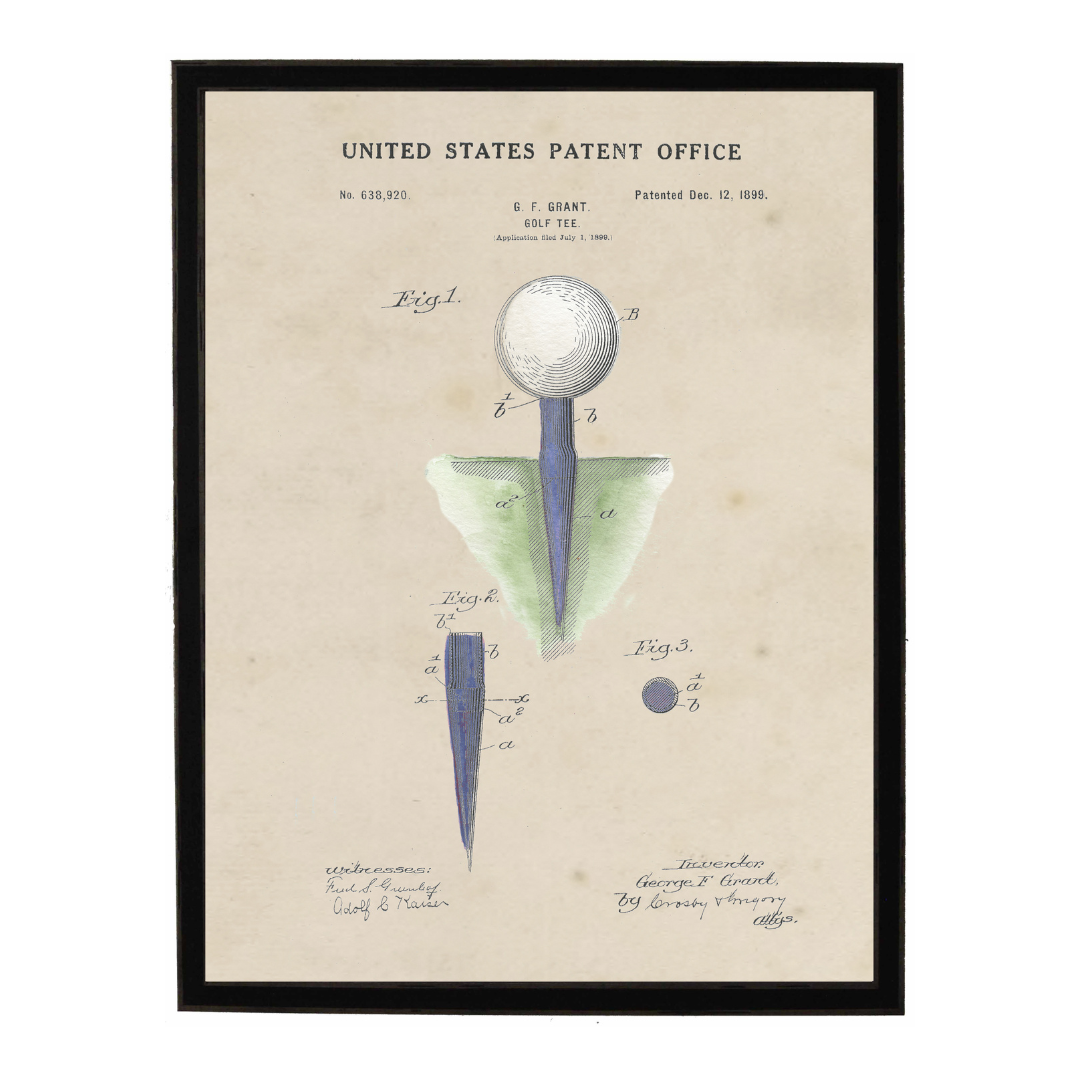Golf, one of the oldest recorded sports, is believed to have been derived from an ancient Dutch game called Apocryphally, played in the early 13th century. The goal of the game was to hit a ball with a stick toward a target hundreds of yards away. The winner reached the object in the least number of strokes. While these rules somewhat mimic the game we know today, modern day golf was first officially documented in 1457 when King James II recognized the game.

The concept of a golf tee dates back to the early 1500’s. In an effort to lift the ball off the ground when driving, players would create small mounds of sand, creating a “tee.” Courses would typically supply the wet sand needed in boxes at every hole, hence the name tee box.

This process was typically very messy and tedious, causing many to search for another solution. The first reusable tees were patented by two Scots, William Bloxsom and Arthur Douglas. Their patent, granted in 1889 allowed the ball to be raised but not fixed into the ground, making it easy to fall over in windy conditions.
The first tee that could be placed into the ground was invented in 1892 by Percy Ellis of Surrey, England. From there, many iterated on the basic design. The tee, as we know it today, emerged in 1899. Boston dentist and one of the first black Harvard graduates Dr. George Grant invented the design. Grant didn’t announce the design or have any intention of commercializing it. He simply used the tees himself or handed them out to friends and family.
Wooden tees didn’t become mass produced until the Reddy Tee was invented by another dentist, Dr. William Lowell. His design, patented in 1920, became standard throughout golf and even persists today.

While George Grant didn’t commercialize his tee design, he did patent it in 1899. His patent covered a wooden tee with a tapered bottom, meant to be driven into the ground, and a narrow concave top, slightly different from head shapes used today.
Check out the patent





